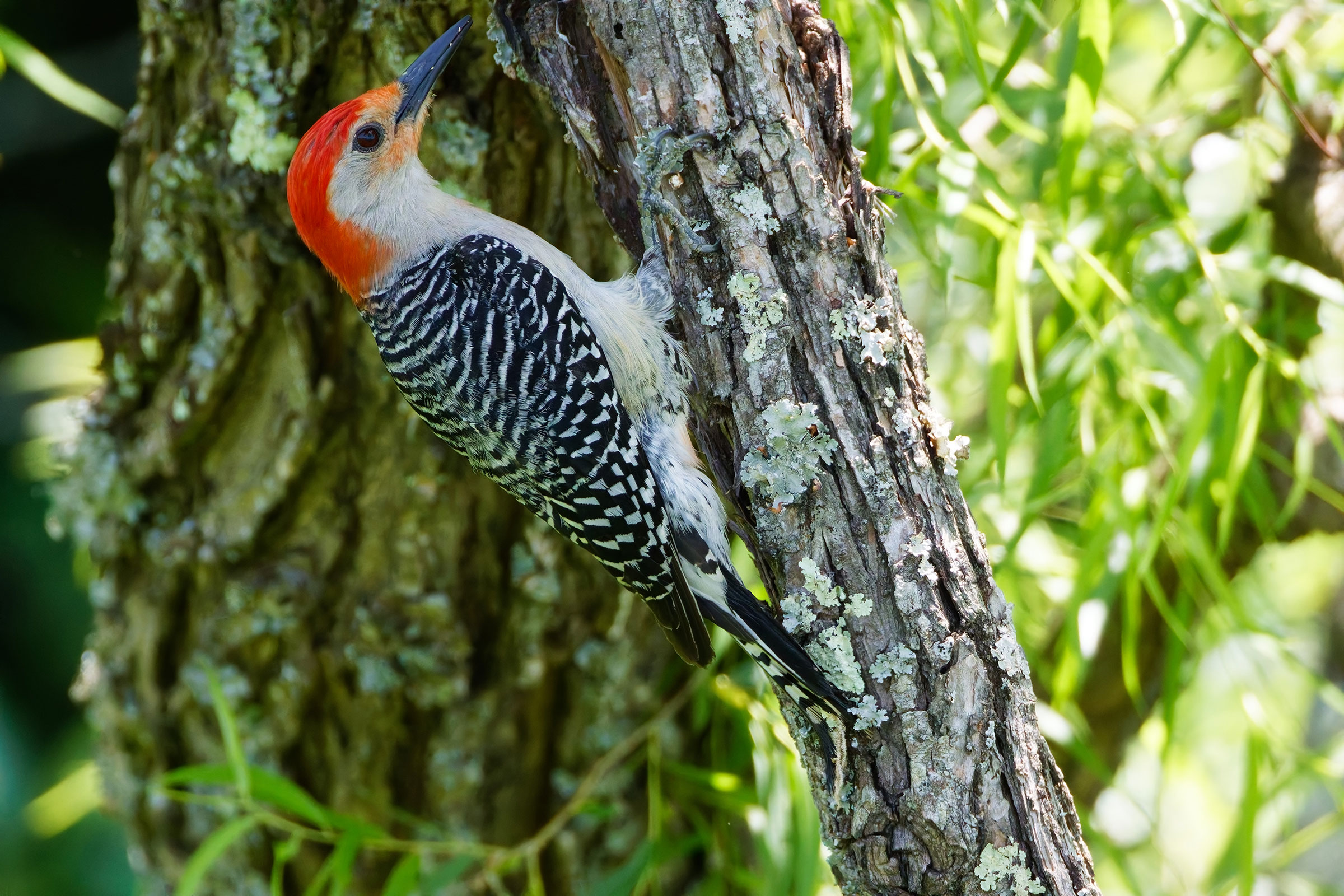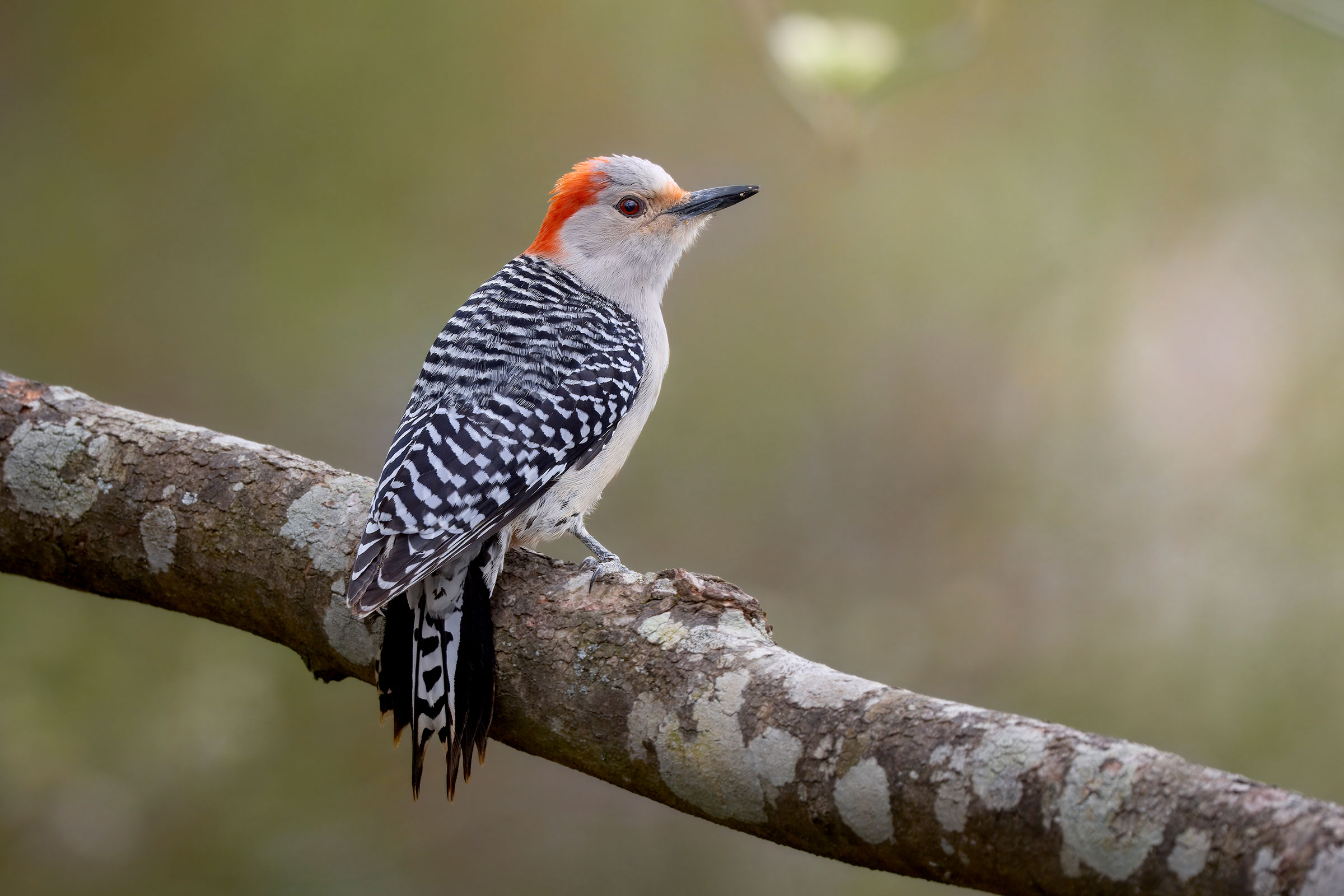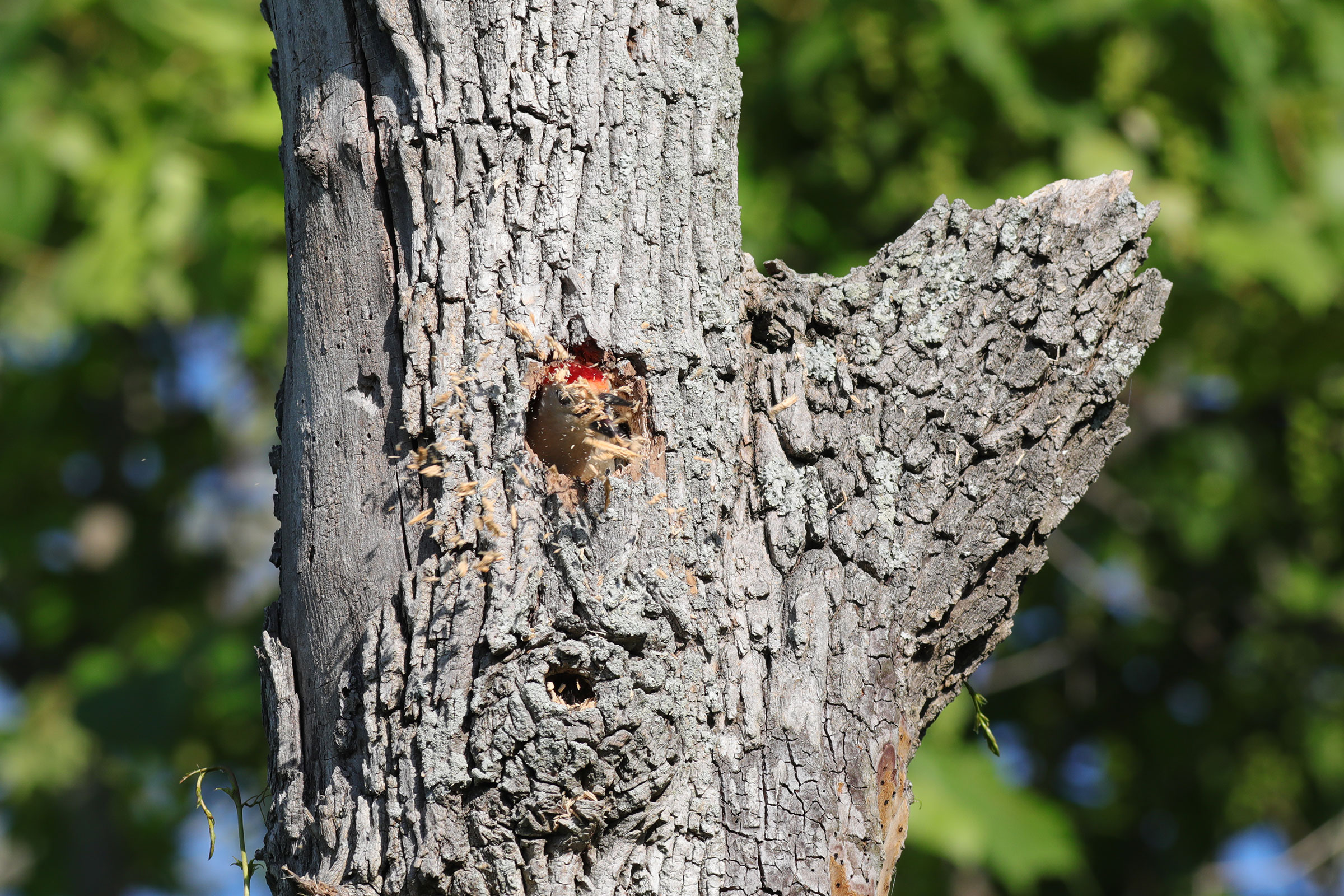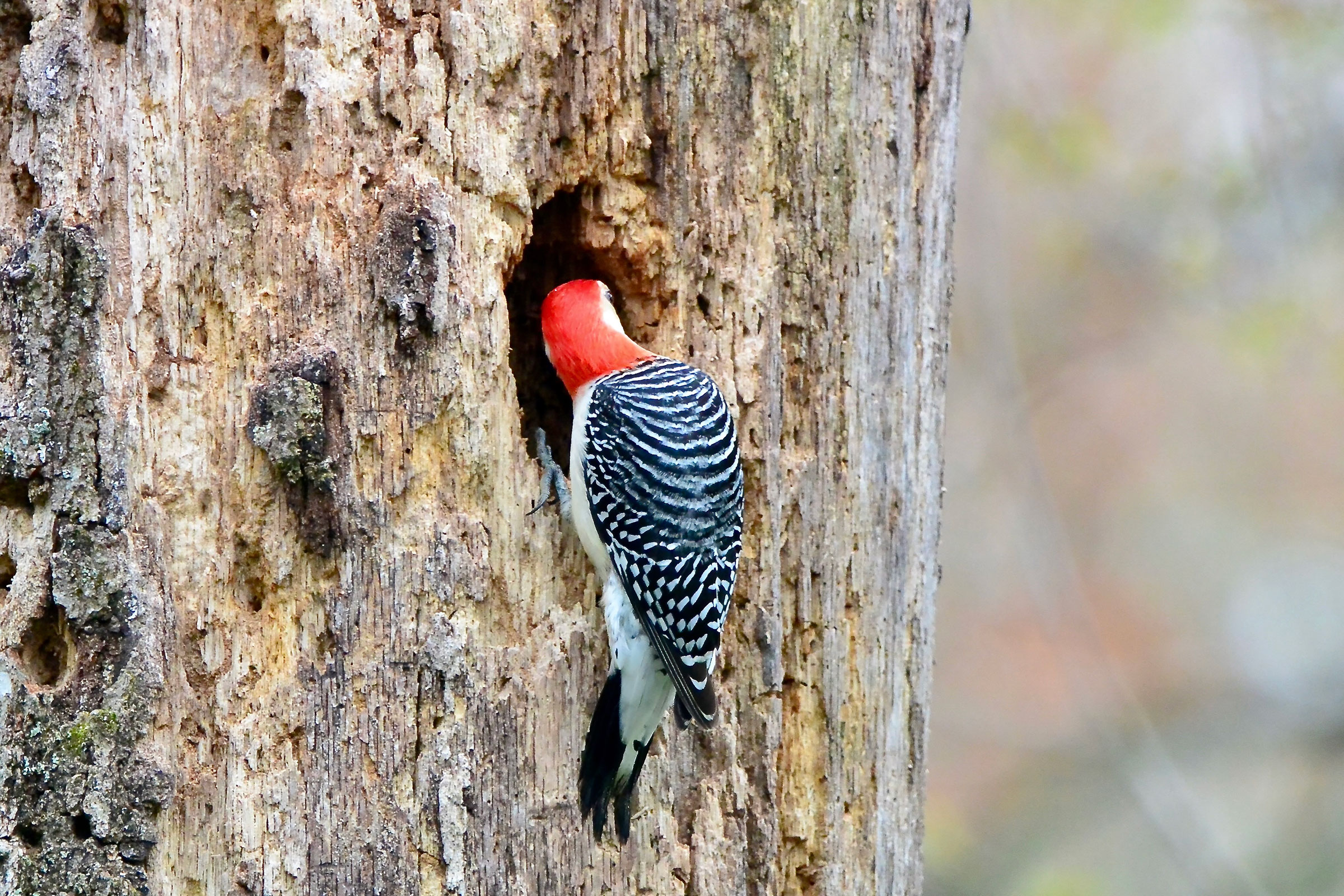Introduction
The Red-bellied Woodpecker is one of the most common and familiar species in the state. This lively, noisy woodpecker serves the broader animal community as a primary cavity excavator, providing nesting sites for many other species of birds and mammals. Its most notable trait is its conspicuous black-and-white striped back and rolling churr-churr calls delivered at length. Its namesake belly is often more of a rusty blush, best visible overhead as it gives its undulating flight. In Virginia, the species is an abundant permanent resident (Rottenborn and Brinkley 2007).
Breeding Distribution
Red-bellied Woodpeckers are found with equal frequency in all regions of the state, barring the highest-elevation forests, where its likelihood of occurring is merely 70% instead of 99%, and some coastal areas (Figure 1). Additionally, its likelihood of occurrence increases with the amount of forest edge habitat. Red-bellied Woodpeckers are resilient generalists who thrive in any forest, even fragmented and disturbed forest (Miller et al. 2020).
Its distribution during the First Atlas and the ensuing change between Atlas periods could not be modeled due to model limitations (see Interpreting Species Accounts). For more information on its occurrence during the First Atlas, please see the Breeding Evidence section.

Figure 1: Red-bellied Woodpecker breeding distribution based on probability of occurrence (Second Atlas, 2016–2020). This map indicates the probability that this species will occur in an Atlas block (an approximately 10 mi2 [26 km2] survey unit) based on environmental (including habitat) factors and after adjusting for the probability of detection (variation in survey effort among blocks).
Breeding Evidence
Red-bellied Woodpeckers were confirmed breeders in 647 blocks and 120 counties and probable breeders in an additional 4 counties (Figure 2). Most of the counties missing confirmations were smaller independent cities such as Buena Vista. During the First Atlas, this species was also confirmed in all regions of the state, although survey effort was considerably less during the First Atlas than during the Second Atlas (Figure 3).
Red-bellied Woodpeckers began occupying nests on March 11 and carrying food to their nestlings shortly thereafter. (Figure 4). Fledglings appeared starting on April 10. Breeding continued through early September, with adults feeding young through September 6. For more general information on the breeding habits of the Red-bellied Woodpecker, please refer to All About Birds.

Figure 2: Red-bellied Woodpecker breeding observations from the Second Atlas (2016–2020). The colored boxes illustrate Atlas blocks (approximately 10 mi2 [26 km2] survey units) where the species was detected. The colors show the highest breeding category recorded in a block. The numbers within the colors in the legend correspond to the number of blocks with that breeding evidence category.
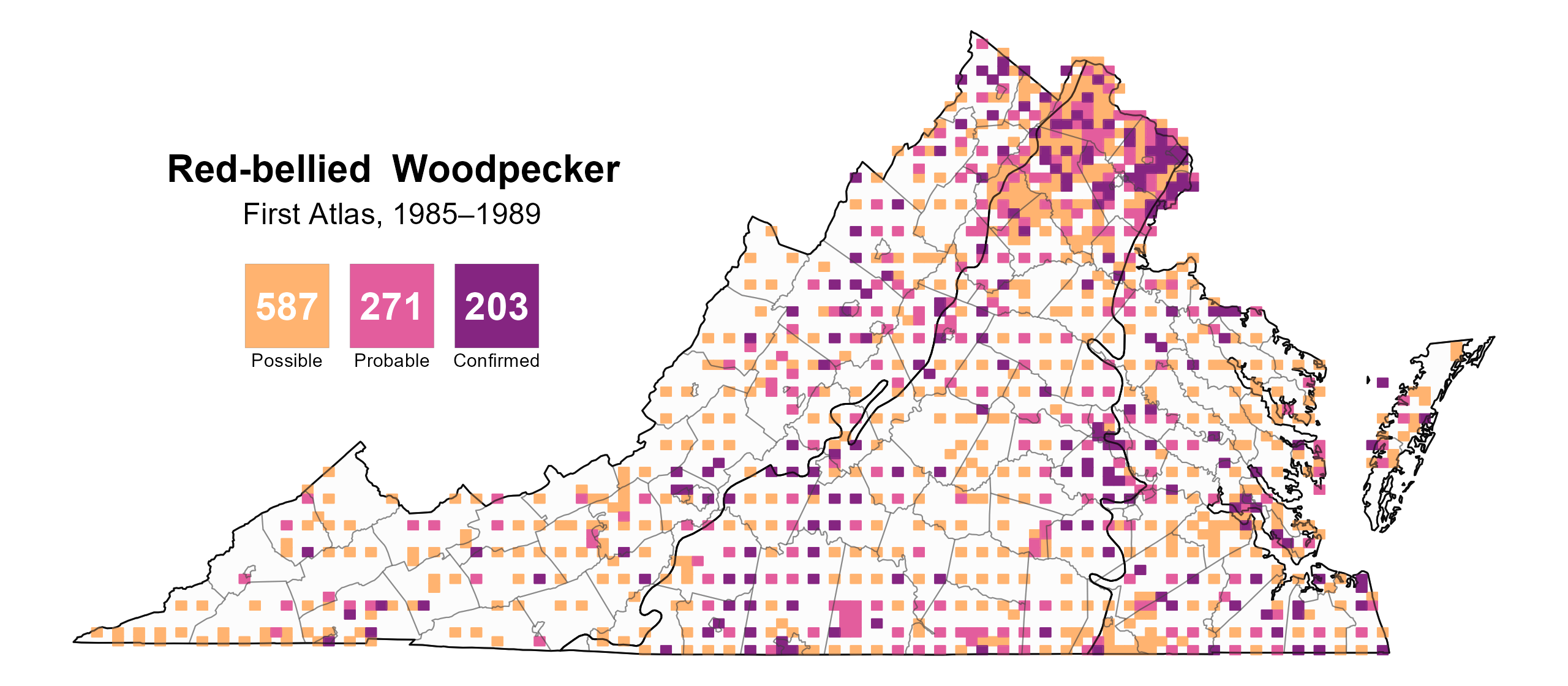
Figure 3: Red-bellied Woodpecker breeding observations from the First Atlas (1985–1989). The colored boxes illustrate Atlas blocks (approximately 10 mi2 [26 km2] survey units) where the species was detected. The colors show the highest breeding category recorded in a block. The numbers within the colors in the legend correspond to the number of blocks with that breeding evidence category.

Figure 4: Red-bellied Woodpecker phenology: confirmed breeding codes. This graph shows a timeline of confirmed breeding behaviors. Tick marks represent individual observations of the behavior.
Population Status
Red-bellied Woodpeckers were fairly abundant throughout the state, reaching their greatest predicted relative abundance levels in Northern Virginia and the Shenandoah Valley (Figure 5).
The total estimated Red-bellied Woodpecker population in the state is approximately 1,153,000 individuals (with a range between 798,000 and 1,673,000). The North American Breeding Bird Survey (BBS) showed a nonsignificant increase of 0.38% per year from 1966–2022 (Hostetler et al. 2023; Figure 6). Between the Atlases, BBS data showed a significant increase of 1.64% per year in Virginia from 1987–2018.
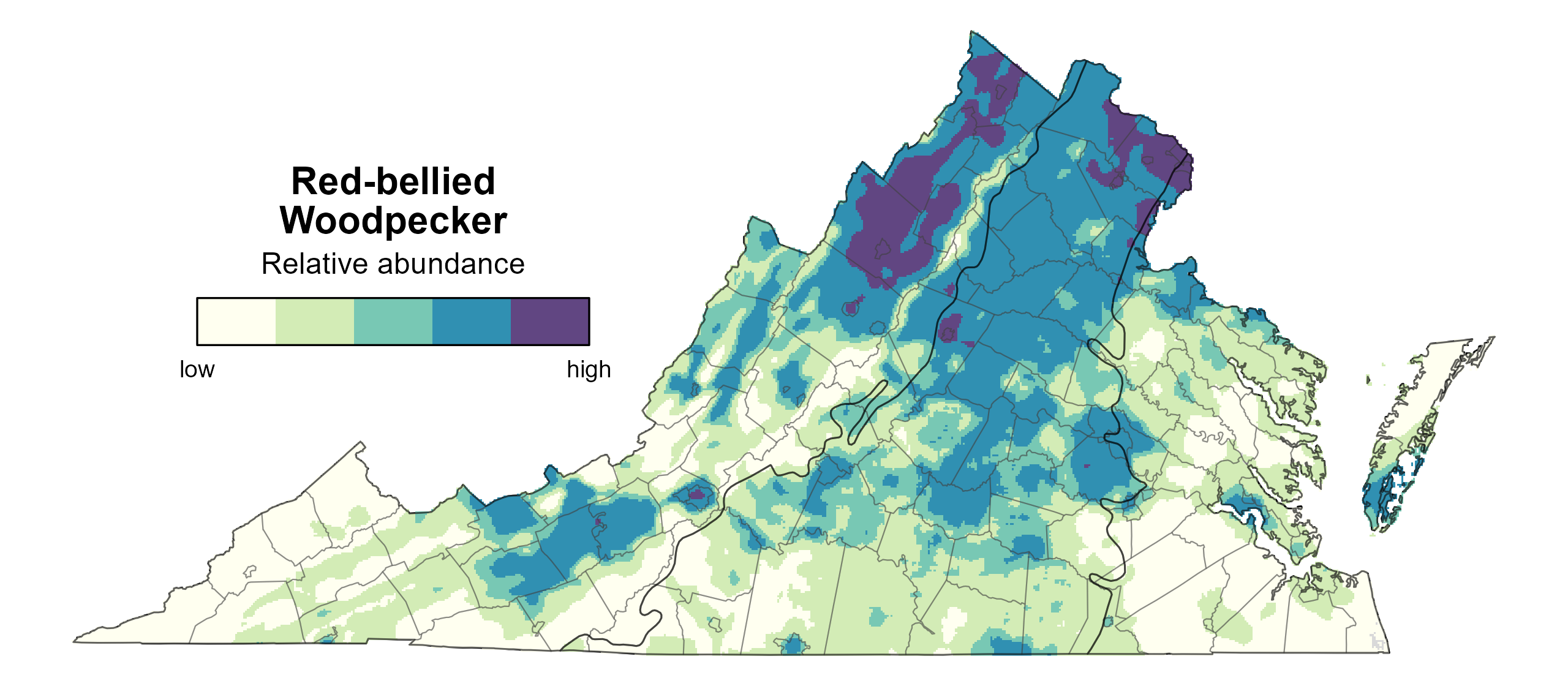
Figure 5: Red-bellied Woodpecker relative abundance (Second Atlas, 2016–2020). This map indicates the predicted abundance of this species at a 0.4 mi2 (1 km2) scale based on environmental (including habitat) factors. Abundance values are presented on a relative scale of low to high.
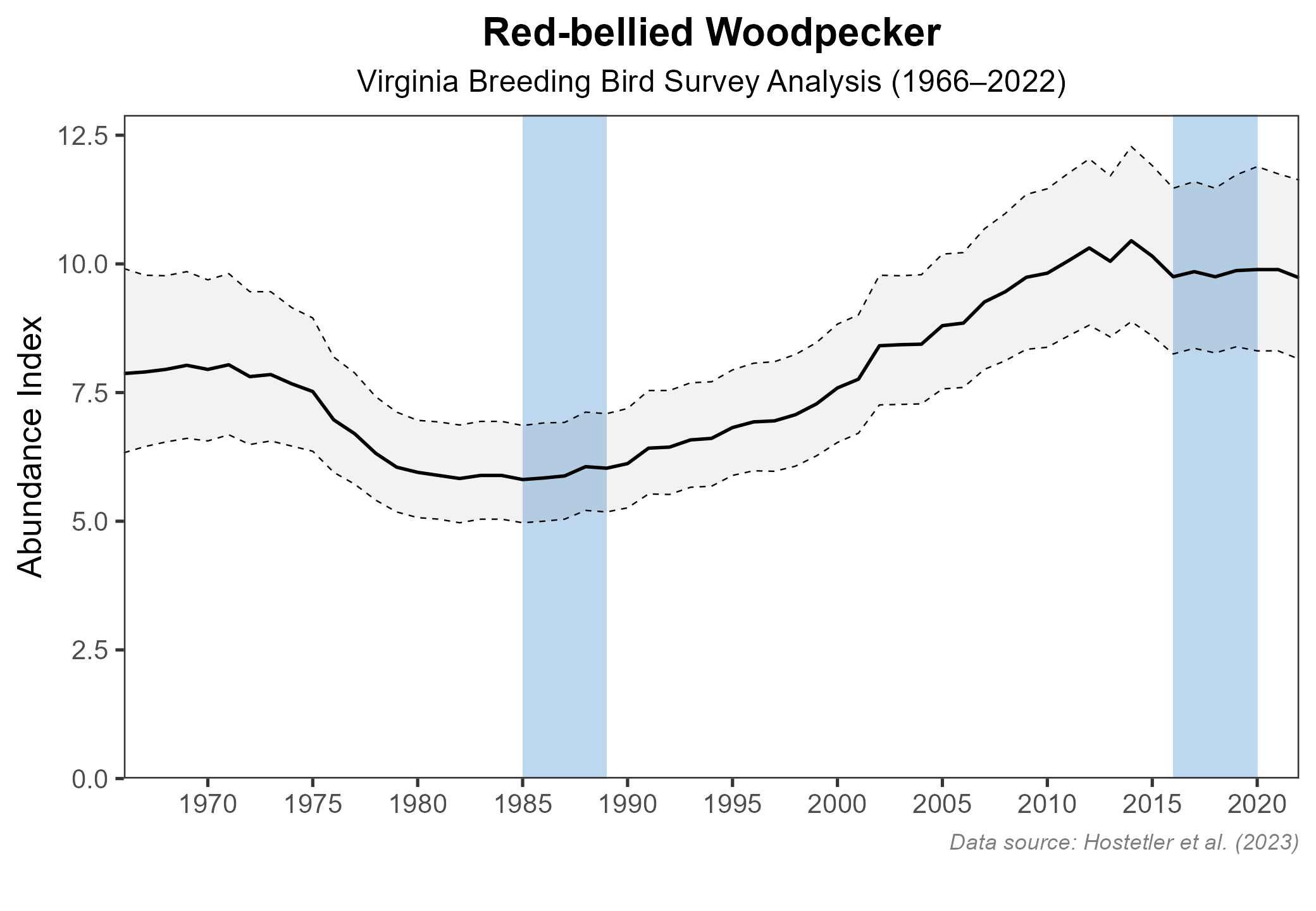
Figure 6: Red-bellied Woodpecker population trend for Virginia as estimated by the North American Breeding Bird Survey. The vertical axis shows species abundance; the horizontal axis shows the year. The solid line indicates the estimated population trend; there is a 97.5% probability that the true population trend falls between the dashed lines. The shaded bars indicate the First and Second Atlas periods.
Conservation
Red-bellied Woodpecker populations are currently stable in the Commonwealth, and they are not a species of concern. Like many woodpeckers, this species benefits when landowners leave standing dead trees and branches that they can use for nest sites.
Interactive Map
The interactive map contains up to six Atlas layers (probability of occurrence for the First and Second Atlases, change in probability of occurrence between Atlases, breeding evidence for the First and Second Atlases, and abundance for the Second Atlas) that can be viewed one at a time. To view an Atlas map layer, mouse over the layer box in the upper left. County lines and physiographic regional boundaries (Mountains and Valleys, Piedmont, and Coastal Plain) can be turned on and off by checking or unchecking the box below the layer box. Within the map window, users can hover on a block to see its value for each layer and pan and zoom to see roads, towns, and other features of interest that are visible beneath a selected layer.
View Interactive Map in Full Screen
References
Hostetler, J. A., J. R. Sauer, J. E. Hines, D. Ziolkowski, and M. Lutmerding (2023). The North American breeding bird survey, analysis results 1966–2022. U.S. Geological Survey, Laurel, MD, USA. https://doi.org/10.5066/P9SC7T11.
Miller, K. E., D. L. Leonard Jr., C. E. Shackelford, R. E. Brown, and R. N. Conner (2020). Red-bellied Woodpecker (Melanerpes carolinus), version 1.0. In Birds of the World (P. G. Rodewald, Editor). Cornell Lab of Ornithology, Ithaca, NY, USA. https://doi.org/10.2173/bow.rebwoo.01.
Rottenborn, S. C., and E. S. Brinkley (Editors) (2007). Virginia’s birdlife: an annotated checklist. 4th edition. Virginia Society of Ornithology.

